SOUTHERN UTAH — Now is a great time to prune fruit trees, grapes and roses using these simple “how-to” steps from a St. George arborist. A little preparation now will ensure a beautiful garden and generous yield for months to come.
Watch video: Click  above.
above.
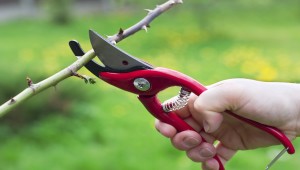
Equipment
Starting with the right equipment makes all the difference, said Mark Hodges, a degreed arborist and owner-operator of Arbor Tech in St. George. Bypass pruners are preferable because, unlike anvil or straight pruners, they don’t crush the stem but make a clean cut.
Keeping pruners clean is also important, so spraying Lysol or other disinfecting spray directly onto the blades keeps them clean, Hodges said. In addition to eliminating cross contamination that can occur while moving from one plant to the next, it helps stem the spread of bacteria that can be harmful to trees and plants.
Fruit tree care
Fruit trees filter the air, condition the soil, provide shade and attract pollinators to the garden. They live long enough to span an entire human lifetime. Caring for them can yield fruit for decades.
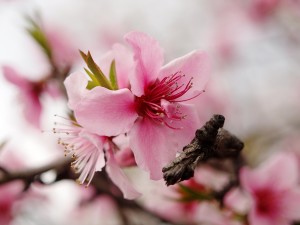
The key to keeping fruit trees attractive and productive is annual pruning. Now is the best time to tackle the job, having a clear view that will soon be blocked by foliage.
Pruning methods are particularly important for fruit trees. If a stub is left, decay sets in. A proper cut initiates compartmentalization, which is a way the tree protects itself by sealing off the area, preventing infection and decay.
Improper cuts lead to decay that continues to spread until the tree has a chance to grow over that area, Hodges said. However if done correctly the cut, over time, is completely sealed and covered in bark.
Start by removing anything that is diseased, damaged or dying and any sprouts coming from the base of the trunk (suckers that originate from the trunk and don’t produce fruit). Once that is completed there are three different pruning methods
The first is called “central leader,” where a leader that comes up through the center of the tree is left intact, and everything else is cut back around it, leaving one branch coming up in the middle, he said.
The second method is a “modified central leader,” where three to four branches are left intact while pruning the remaining branches back.
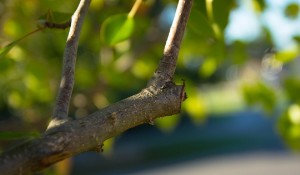
The third method is called “open center,” where all the branches in the center are pruned completely back leaving the center open to four main leaders, Hodges said.
This opens the tree up, removes any cross branches allowing sunlight to hit as many blossoms as possible, yielding more fruit.
Dormant oil spray can be used on fruit trees now, which protects them from diseases and insect infestation, Hodges said.
Types of trees
Pomegranates are great for growing in desert climates, need very little maintenance and don’t necessarily require pruning unless cutting them back allows easier access to the fruit. However, cutting them back also removes a great deal of new growth, so a lower yield can be expected for up to two growing seasons.
Pecan trees are plentiful in St. George. Some don’t like these trees because they drip a sticky substance, as anyone who has ever parked under one can attest to.
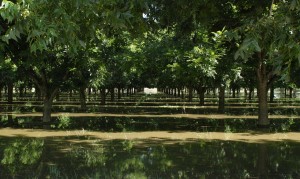
The substance is actually produced by aphids as they feed on the tree and is a waste product known as “honeydew,” Hodgson said.
The rule to follow for pruning pecan trees is: don’t, unless it’s necessary. The reason is that pecan trees have a difficult time compartmentalizing, or sealing, cuts or breaks, Hodges said.
“Even with proper cuts, decay sets in and spreads quickly, leaving a dying branch that becomes brittle and can break off,” Hodges said. “Just leave them alone and let them grow,” he said.
Mark’s list of top trees to grow in Southern Utah
These trees are low-maintenance, have the fewest diseases and infestations, are drought tolerant and grow very well in Southern Utah:
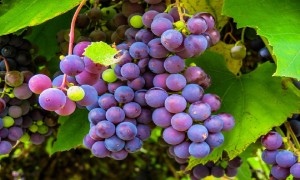
- Almond
- Apricot
- Cherry
- Peach
- Pecan
- Pistachio
- Pomegranate
Trees to avoid
- Apple
- Plum
Apple trees are difficult to grow in this region due to coddling moth infestations, which are common in the area.
Plum trees are problematic because sugar production in the fruit is inhibited in climates that exceed 90 degrees, so the fruit isn’t as sweet.
Pruning grapes
The general rule for pruning grapes is to find a vine that’s growing and placing it on the wire while everything else is pruned back to three buds, Hodges said.
“Most people butcher their grapes, cutting way too much off,” he said. “That’s really not necessary, and there’s a general rule to follow when pruning them.”
Care for roses
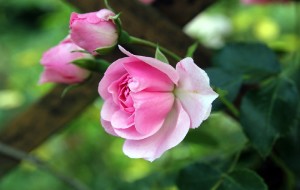
Pruning roses opens them up and allows for new growth. From now until early spring is the best time to prune roses, before the new leaf buds open, Hodges said. This allows energy to be focused entirely on growth instead of repair, he said.
Start by removing any dead material as far back as necessary, followed by removing any suckers that rise from the graft union, (swelling near the base of the plant).
Continue pruning by selecting the healthiest canes, those that are thick and green, and remove everything else. This opens the plant up, allowing air and light which promotes growth, Hodges said.
Cut the remaining canes back by one-half or one-third, making the cuts approximately one-quarter above an outward facing bud, always making sure that buds are facing the right direction, Hodges said.
For long roses, cut canes back closer to the graft union or the bulb near the base. For a bush full of roses, a moderate cut is preferred, which means cutting less, and leaving more buds, Hodgson said.
Nutrients and fertilization
Before planting anything in the garden or yard, loosen the soil that has become compacted by gravity, rain and foot traffic.
Organic amendments can be added at this time and worked into the soil to soften it and allow even distribution of nutrients. Even with existing fruit trees or rose bushes, adding compost or other organic material replenishes nutrients that were lost during the last growing season or through runoff or erosion. Once the soil begins to warm up, the organic material begins breaking down, feeding the plants slowly over time.
Utah State University Extension provides a great resource manual entitled “Pruning the Orchard,” Hodges said, which can be downloaded via the link provided.
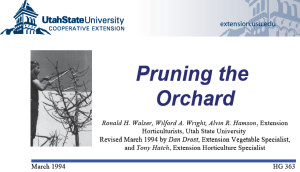
About Mark Hodges
Hodges won an entrepreneurial contest at Dixie High School, being awarded $3,000 for running his own professional tree service. That tree service is ongoing today. As his business developed, he went on to work for the City of St. George as the City Forester, obtained his degree in arboriculture (the study of trees) from Dixie College, continued his personal career and expertise, obtaining the title of master gardener, receiving his UNLA certification (certified nursery man, he said). He has taught classes and seminars on plants and things of this nature and has served on the Shade Tree Board for the City of St. George, among other things.
Contact Mark Hodges: 435-632-0972
Email: [email protected]
Twitter: @STGnews
Copyright St. George News, SaintGeorgeUtah.com LLC, 2016, all rights reserved.